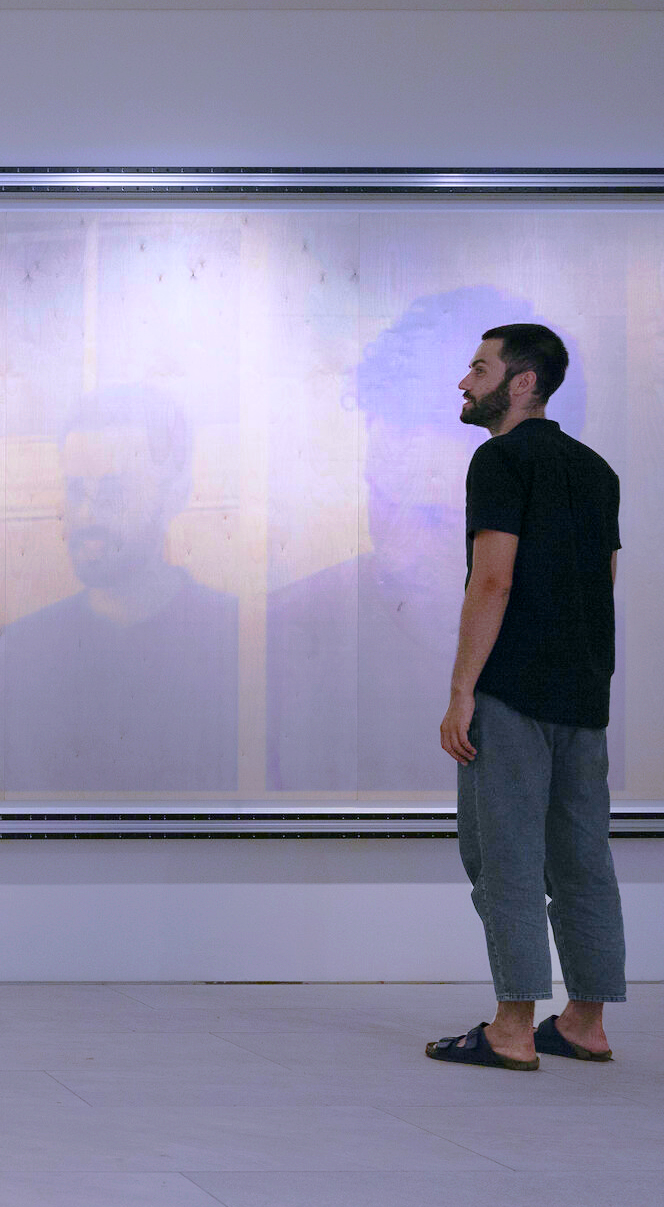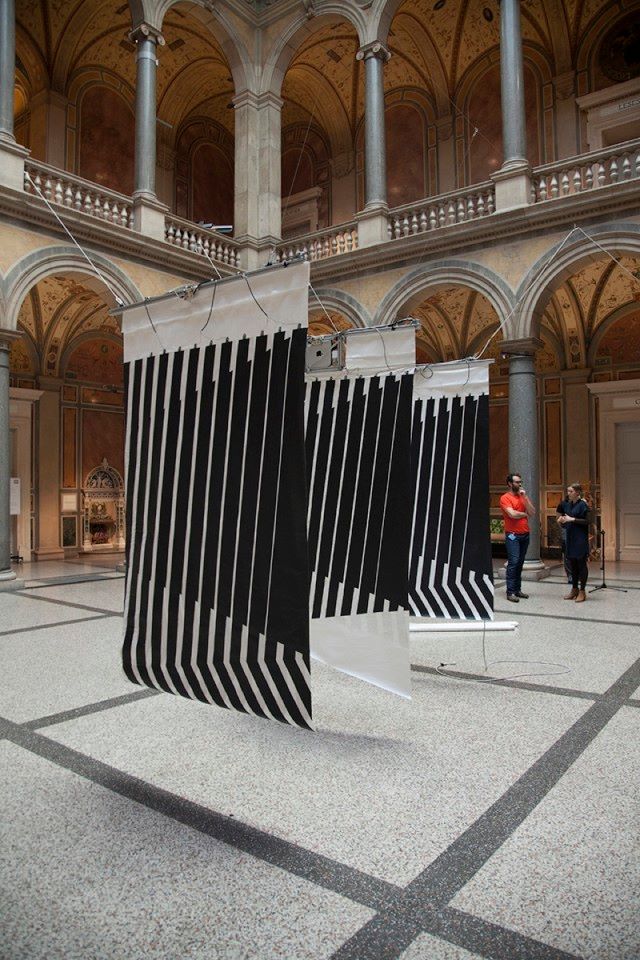
Random International
Presence and Erasure
Presence and Erasure is a portrait machine that explores the reality of automated facial recognition and how people relate to their self-image, instinctively and emotionally. Within a given spatial domain, the artwork constantly scans for faces in the vicinity and photographs them. When the artwork’s algorithm detects a certain quality within a photograph, this image is temporarily printed at large scale by exposing a photochromic surface to light impulses. Each automated portrait remains for little more than a minute, before gradually dissolving into blankness. RANDOM INTERNATIONAL began to combine transient mark-making with automated portraiture early on in their practice, in 2008. Presence and Erasure marks the latest development in this body of work and assumes a minimal, industrial aesthetic that references their earliest studies on this theme. The physical impact of facial recognition and machine vision is emphasised by the exposure of the printing process itself, contrasted against the aesthetic of the high resolution portraits generated. RANDOM INTERNATIONAL intend this as a counter to the perception of surveillance footage as always being low quality, aiming to create a deeper reflection on the nature of surveillance today as well as the resounding cognitive and emotional dissonances.


